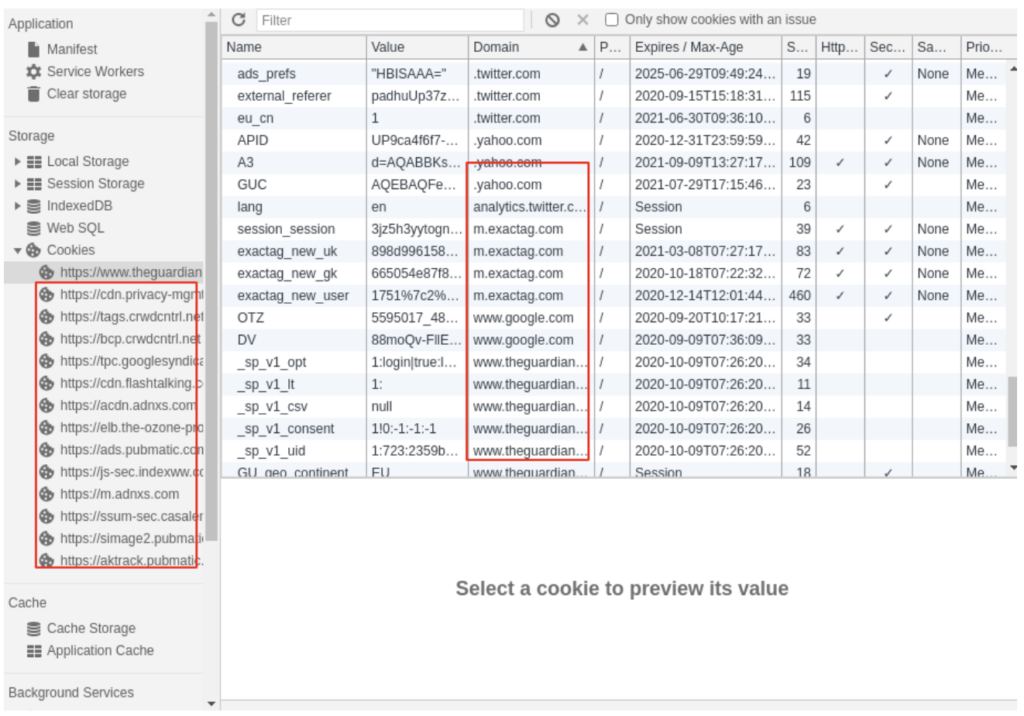First party vs third party cookies, who wins? In the early days of the Internet, cookies were easily understood pieces of code used to run a program on your computer. Today, most Internet cookies are still harmless, but some have caused a stir because of their intrusive nature.
🔑 Key points
- First-party cookies enhance the user experience and are created by the visited domain.
- Third-party cookies, created by third-party entities, track user behavior across websites.
- Tech giants such as Google plan to phase out third-party cookies by 2024, with major implications for online advertising.
- The rise of Server Side Tracking offers an alternative to third-party cookies, with benefits such as better privacy protection.
Table of Contents
What are First-Party Cookies?
First-party cookies primarily provide a smooth user experience on a website. They are created by the domain you visit, and contain information such as the data you enter and possibly your IP address.
Examples of first-party cookies are:
- The greeting cookie: It recognizes you when you visit a website and allows you to log in.
- The shopping cart cookie: Stores the products you place in your shopping cart.
- The recommendation cookie: Does product recommendations based on your preferences.

What are Third-Party Cookies?
Third-party cookies are created by external parties and not by the domain you are directly visiting. These cookies are primarily aimed at tracking your online behavior and showing you targeted ads.
They can have functions such as:
- Tracking: Tracking your behavior across websites.
- Retargeting: Referring you to websites with products that might interest you.
- Ad Presentation: Show personalized ads that match your interests.

How are Third-Party Cookies Made?
Third-party cookies are often the result of ad servers and other external entities seeking to understand your browsing behavior and respond accordingly. Companies such as Facebook , Google and other advertising platforms utilize these cookies to present you with targeted ads or direct you to a specific landing page, with the goal of conversion.
The distinction between first-party and third-party cookies lies mainly in their origin and purpose. While the originating website produces exclusively first-party cookies, external sources may generate third-party cookies that enable cross-site tracking.
First Party vs Third Party Cookies: A Comparison
Let’s look at the nuances between these two types of cookies:
First-party cookies are fairly targeted, linking your browser only to the website you are visiting. Their use rarely causes privacy concerns, which explains their universal acceptance by users.
In contrast, third-party cookies have no direct connection to visitors. They are in most cases linked to ads and other tracking mechanisms. However, major browser developers, in response to privacy concerns, have announced that they will discontinue support for third-party cookies. More on this later.
Below is a table highlighting the key differences between first-party and third-party cookies:
| Feature | First-Party Cookies | Third-Party Cookies |
| Who makes the cookies? | Sourced from the website publisher. Can be via JavaScript code or as part of the website server. | Often generated by external ad servers and ad platforms. |
| Where are cookies used? | Exclusively on the website she created. | Across sites for cross site tracking and targeted ads. |
| Who can read the cookie? | Just the original website. | Any domain that accesses the cookie. |
| When can the cookie be read? | If the user is active on the original website. | At any time, regardless of the website you visit. |
| What does my browser do with it? | Supported by all browsers. Users are given tools to Administer them. | Depends on browser settings and privacy policies. |
Third-party cookies phasing out
Google has announced that it will phase out third-party cookies in Chrome Third Party Cookies 2024. This is a major change that will have a significant impact on the way online advertising is done.
The phase-out of third-party cookies is driven by user privacy concerns. Third-party cookies can be used to track users’ movements around the Internet, which can be an invasion of privacy.

The Rise of Server Side Tracking
The phasing out of third-party cookies is a major change that is forcing websites to move to alternatives such as Server Side Tracking.
Server Side Tracking provides an alternative method of tracking user behavior without relying on traditional third-party cookies.
Server Side Tracking offers a number of advantages over third-party cookies, including better privacy protection and more reliable/more data.
Summary
While first-party cookies have a direct relationship with the domain you visit and are aimed at improving your user experience, third-party cookies are often more commercial in nature and intended for advertising purposes. In a world where Server Side Tracking is becoming increasingly dominant, it is essential to understand the role and operation of these cookies.
About the author

Ate Keurentjes
Server Side Tracking Specialist at TAGGRS
Ate Keurentjes is a Server Side Tracking specialist at TAGGRS. He has experience with various Google Tag Manager concepts. Keurentjes has been editing and writing about the latest developments and trends in data collection / Server side tracking since 2023.
